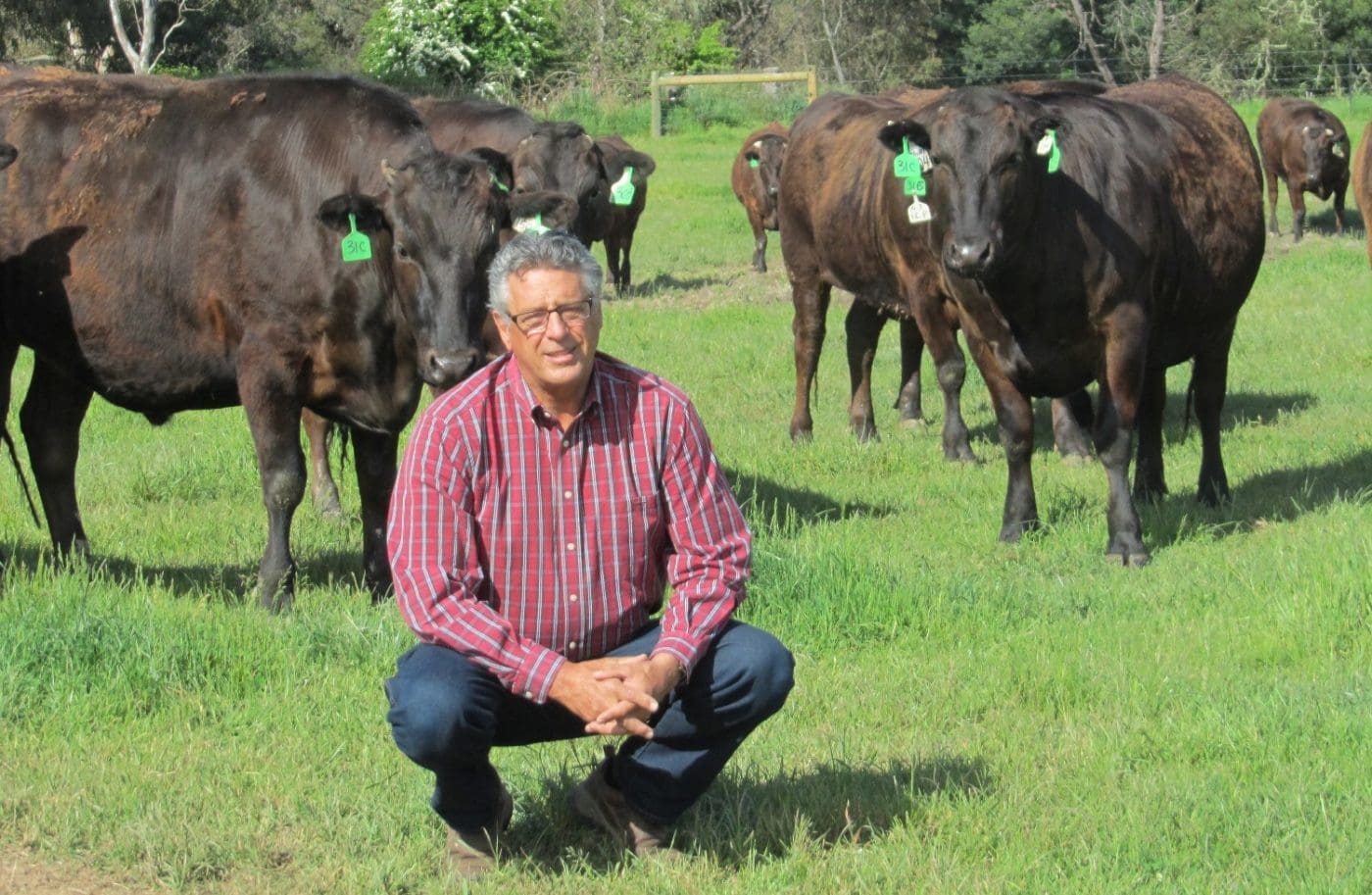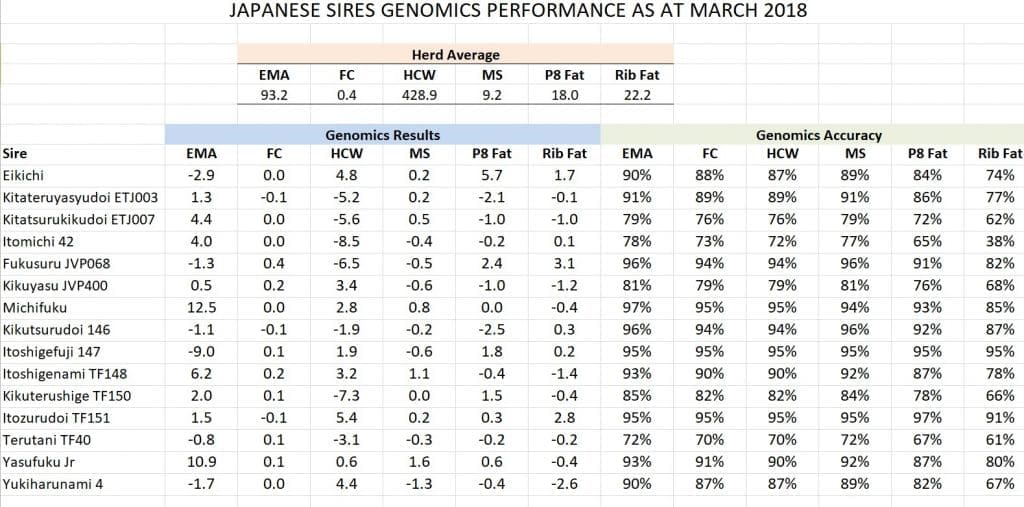THE reliability and accuracy of performance data is a high priority for Blackmore Wagyu, one of the pioneers in genomic testing and research in Wagyu in Australia.
One of the nation’s best-known Fullbood Wagyu genetics and branded beef program businesses, Blackmore’s benchmark for accuracy, before any data is released, is 70 percent – the same as the dairy industry.
It was after discussions with various genomic laboratories around the world that Blackmore signed a contract with the Victorian Department of State Development, Business and Innovation, through its Biosciences Research Division for Genotyping Services back in August 2014, to begin researching the genomic profile of its Fullblood Wagyu herd.

David Blackmore
Since the early 1990s Blackmore had collected and saved the DNA, (principally through hair samples) of the majority of the cattle it had bred, raised and processed.
“This was like gold for the researchers, as there was a large store of historical data on animals that could be profiled,” principal David Blackmore said.
Blackmore now has more than 12,000 animals in its database, which includes its foundation animals, the direct descendants of animals born in Japan.
Mr Blackmore’s daughter Danielle has designed and developed the business’s own database, started in 1993, which records all breeding traits, including fertility, birth weights, weightgain, all maternal traits and follows through with the performance of animals on feed, and the carcase traits on each animal (graded by AusMeat assessors), which are linked to a three-generation pedigree.
It was after discussions with the organisers of BreedPlan in 1996, (after collecting a significant amount of F1 carcase data), that Blackmore decided to organise its own progeny test program, with the help of a prominent Japanese researcher who was involved with the progeny test program in Japan.
“He first visited us in July 1997 and again the following year, and we were lucky to be able to visit him at his workplace and his home twice in Japan,” Mr Blackmore said.
As a result, the following table, produced in June 2013, was providing data with a high amount of reliability.
“This table shows only the bulls that we used, that were exported from Japan,” Mr Blackmore said.
“By this time, we had progeny tested 18 bulls we had bred ourselves, from which we were identifying bulls that were out-performing the original exported Japanese bulls.”
He said it was important to note that this data reflected how those bulls performed in the Blackmore herd, under its own management, production methods and feed ration.
“They may perform differently under different conditions,” Mr Blackmore said.
However a direct comparison between the bulls’ progeny data does have a high degree of reliability, as all carcases have been raised under the same method of production.
Earlier this month Blackmore received the last round of results from its genomic research.
“We now have a genomic profile on 4815 Fullblood Wagyu cattle imputed to 800K SNP,” Mr Blackmore said.
This includes 2996 graded carcases, 88 bulls (21 Japanese-born and 67 home bred), and 1731 females.
“We have the next phase of our research underway, with another 2800 cattle being profiled – of which the majority are female breeders, and approximately another 500 carcases.”
The following table shows the result of the original Japanese exported bulls that Blackmore used in its herd that have accuracy higher than 70pc (the dairy industry’s benchmark for accuracy before data is accepted).
Mr Blackmore said the prominent sire Itohana 2 would have his profile in the next research run.
“The other original Japanese bulls not included in this data were either lightly used, or not used at all, after the performance of their F1 progeny carcasses in our herd,” he said.
“As in the sire performance table, these GEBV’s reflects how these bulls performed in our herd.”
“For us, it is extremely satisfying to see the strength of our database and our breeding program reflected in the high accuracy percentages shown in the mid-nineties.”
Worth noting at the top of the table, are Blackmore’s herd average genomic GEBV’s.
“We will maintain a rolling base as more animals are profiled, they will be added and the herd re-averaged,” Mr Blackmore said.
All the bull profiles are a direct comparison to the herd average. The accuracies are calculated using the same method as used by BreedPlan.
“We have numerous home-bred bulls that outperform the original Japanese bulls,” Mr Blackmore said. “Our top bull has a GEBV for marbling score of +1.8, 96pc accuracy.”
He said it was interesting to note that one of Blackmore’s best foundation cows that produced 24 carcases 100pc MS 9+, was now minus-rated against today’s herd average.
“At first I thought this can’t be correct, but on looking further, I was able to understand that this reflected the genetic gain we had made in our herd since we started,” he said.


